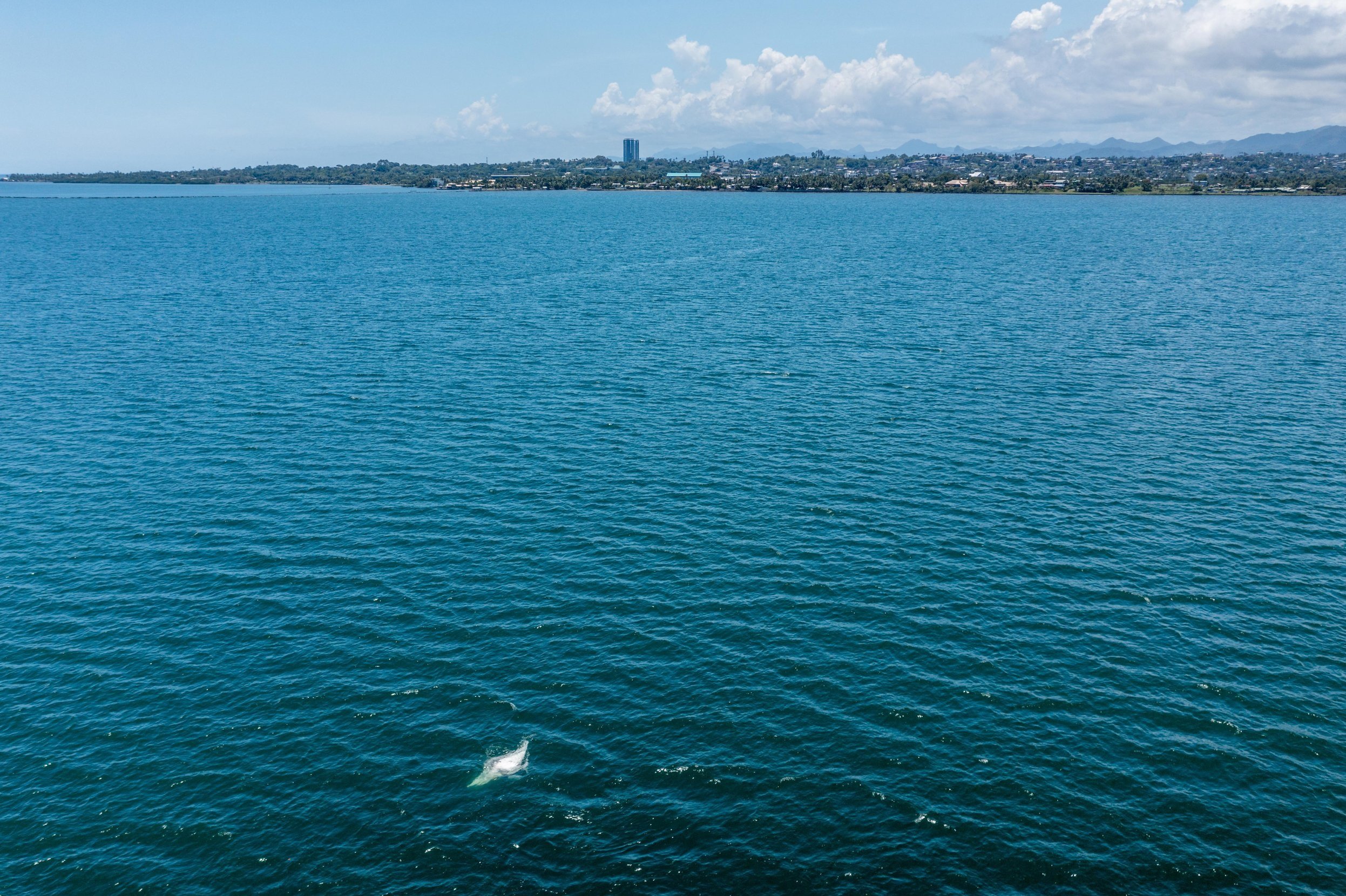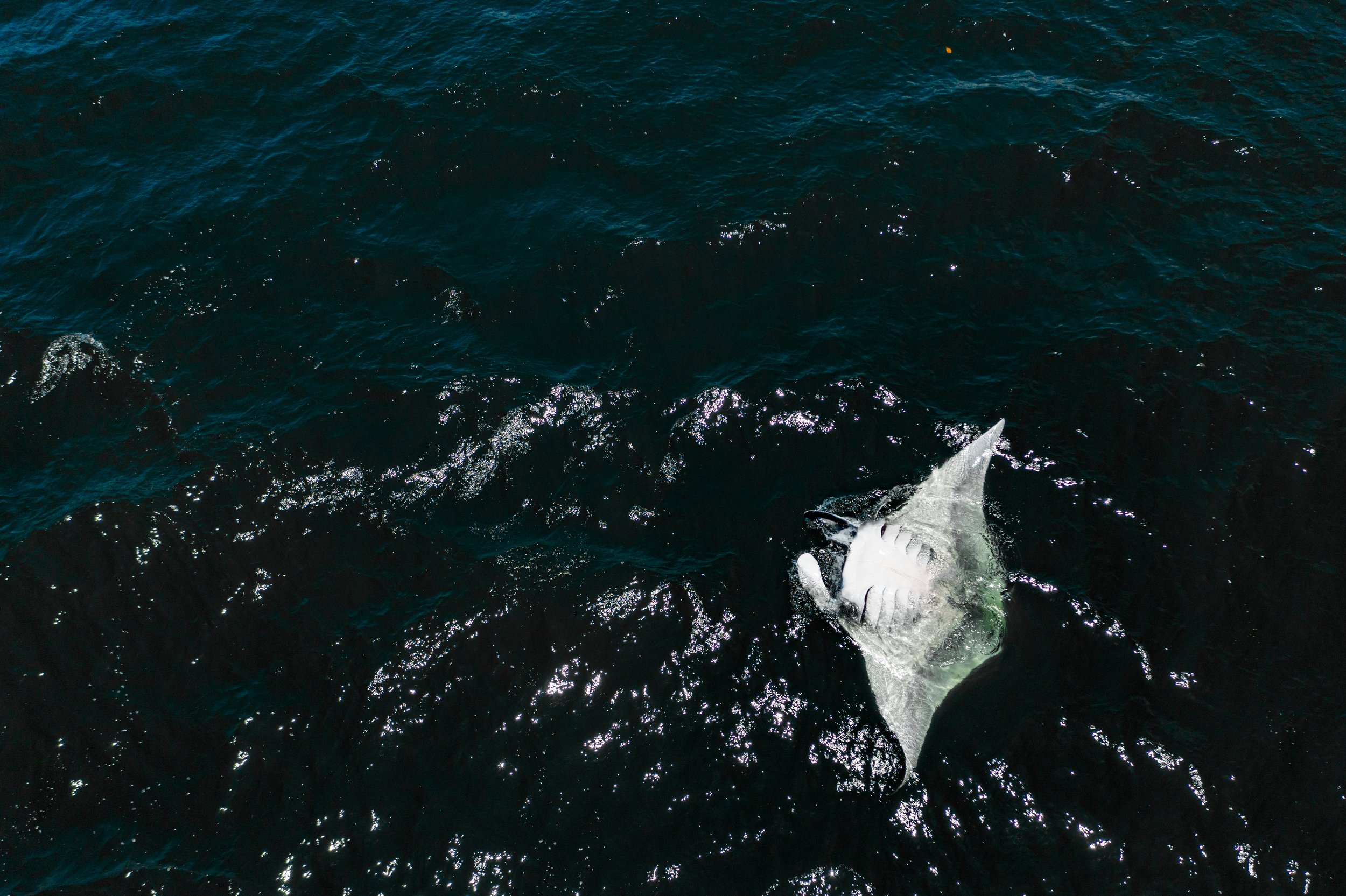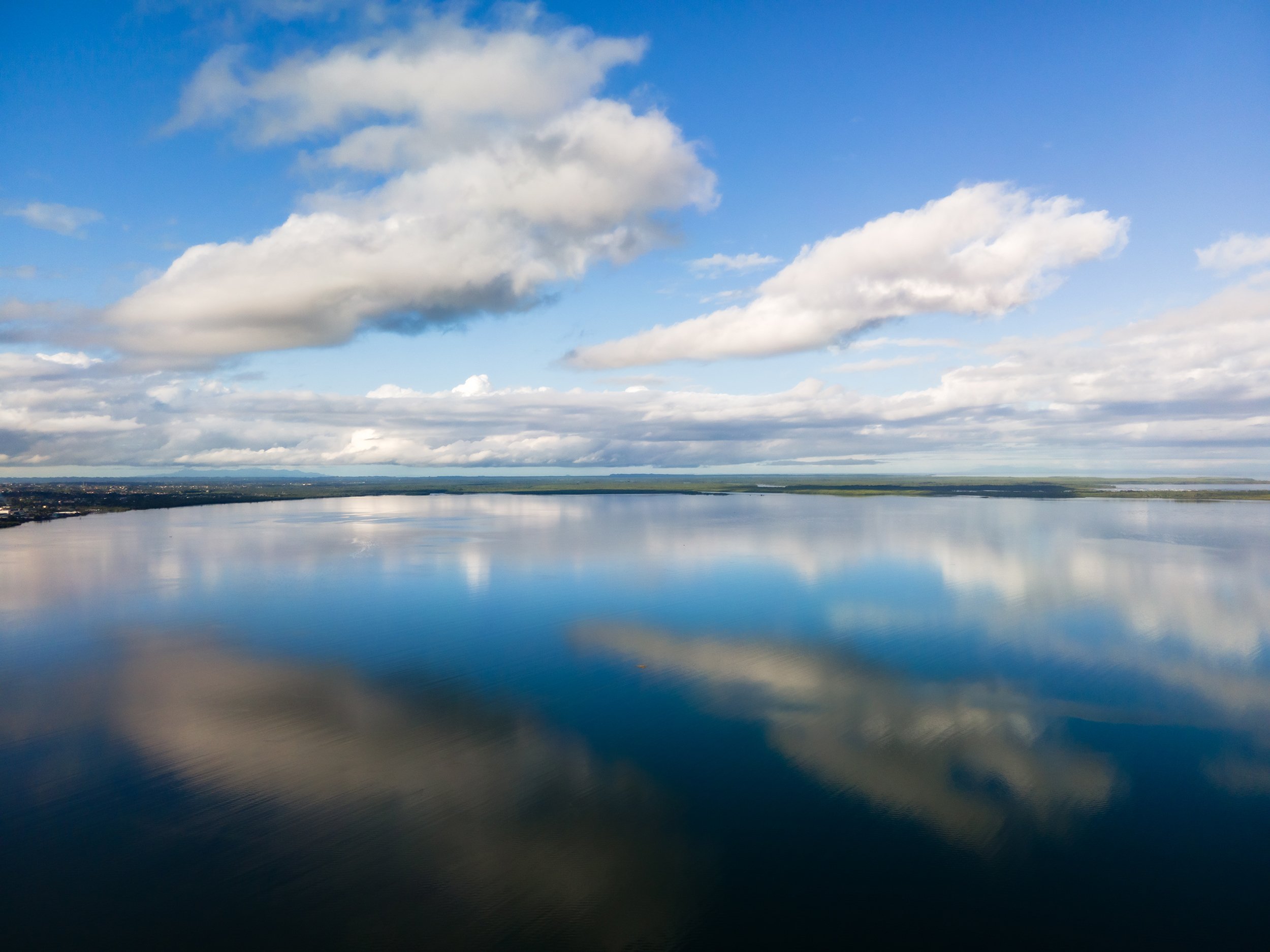Oceanic Manta Rays (Mobula birostris)
Oceanic manta rays (Mobula birostris) have only recently been confirmed in Fiji’s waters, no doubt the species has been seen over many years by local communities and fishermen but up until 2018 we lacked the photographic evidence of this species. Since 2018 however we have had a number of sightings across the country and have identified a foraging ground in Laucala Bay, very close to the country’s capital, Suva.
Photo by Tom Vierus
The oceanic manta ray differs from it’s smaller reef cousin by growing much larger, up to 7m across and utilising a much larger habitat, the current thought is that the oceanic manta rays found in Fiji might traverse the whole South Pacific basin, there is strong evidence that they undertake migration from New Zealand to Fiji/Tonga on an annual basis and maybe even further afield.
With the oceanic manta ray now listed as Endangered on the IUCN red list it is of upmost priority that we better understand this gentle giants life history and ecology so that effective conservation management strategies can be developed across the South Pacific region.
Read more about the difference between Oceanic and Reef manta rays here
Learn more about Fiji’s Oceanic Manta Rays Below
Research Techniques
Photographic Identification
Much like their smaller reef cousins, oceanic manta rays also possess unique identification spots on their ventral surface (belly), however unlike the reef mantas oceanic mantas only display spots below the gills on the lower ventral surface towards the pelvic fins and tail.
This data allows us to build a database of individuals to investigate population demographics, population dynamics and movement ecology.
Drone Surveys
Currently we have few sites where we are able to gather in water data on oceanic manta rays. The current most productive site for oceanic manta sightings is just outside of the Rewa Estuary, one of Fiji’s largest rivers. Because of this the water becomes very turbid where the mantas forage and hard to see when underwater.
To combat this we can utilise drones to gather video and photographic footage when the manta rays are somersault feeding, allowing us to gather identification images from the drone!
Laucala Bay
Laucala bay is currently the only reliable aggregation site for oceanic manta rays in Fiji. This large and dynamic bay sits next to the country’s largest river, the Rewa, oceanic manta rays gather here to forage on dense plankton which blooms in the nutrient rich water. Currently the population database is small and our knowledge of the drivers which characterise this bay are limited, we also lack thorough understanding of the population dynamics and movement ecology of this unique population. Working with the local communities, students and stakeholders we hope to fill these critical knowledge gaps.
If you are interested in donating to or sponsoring this specific project then we would love to hear from you. Please get in touch:
With further funding we will be well equipped to pursue new research methodologies such as tracking equipment and support local research to give us a much better understanding of this species throughout the South Pacific basin.








